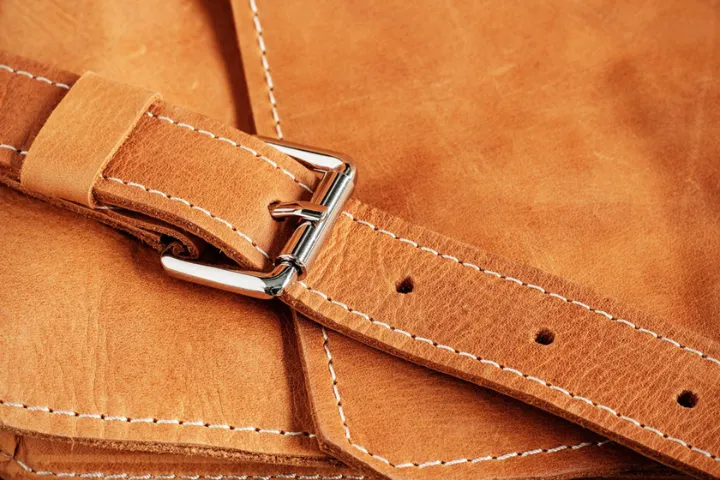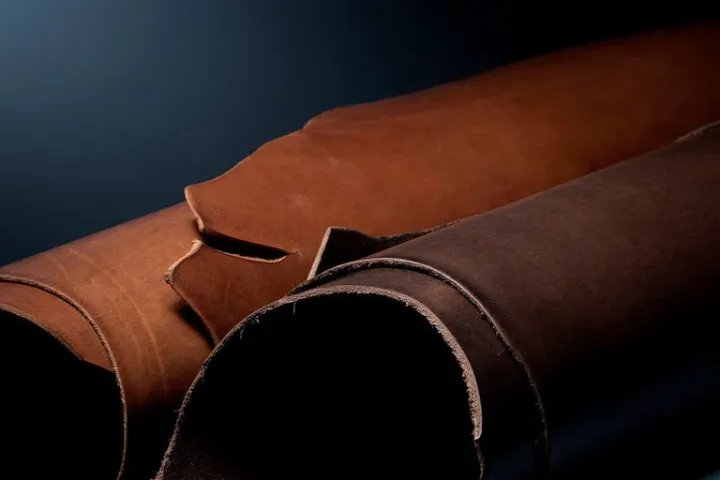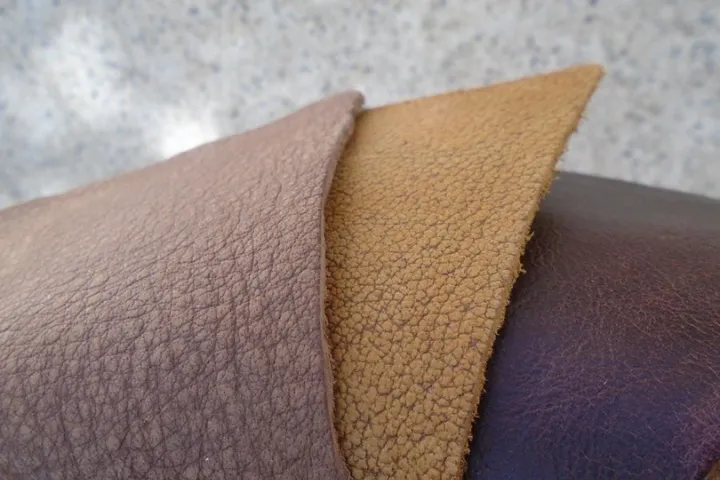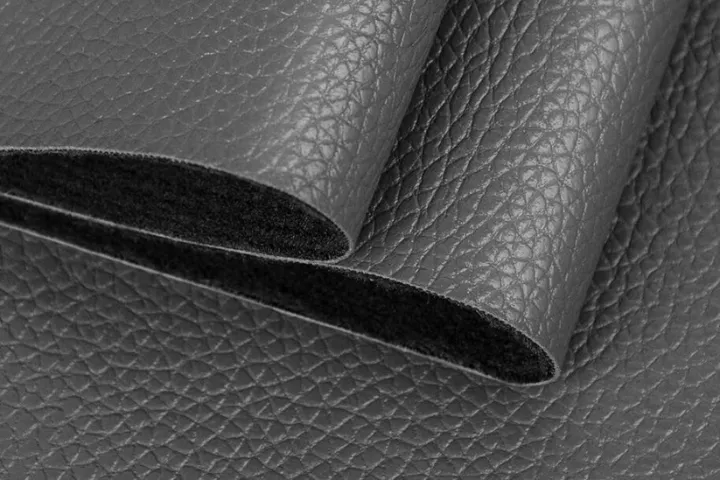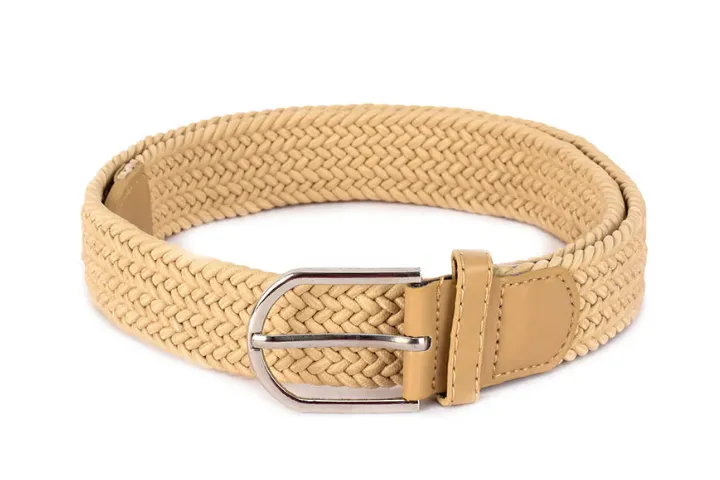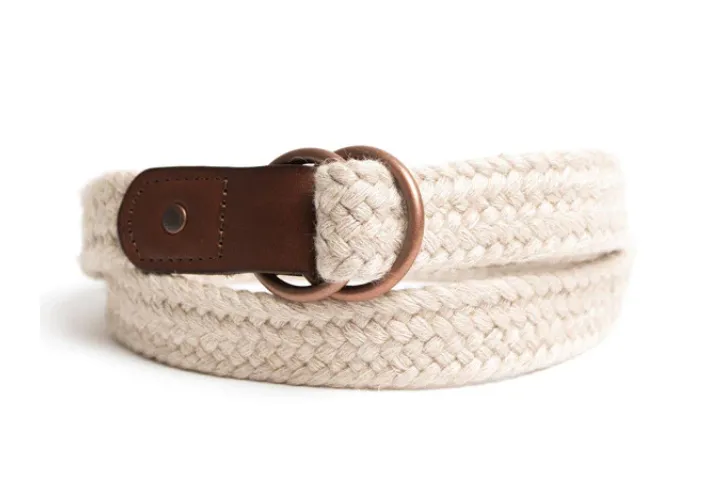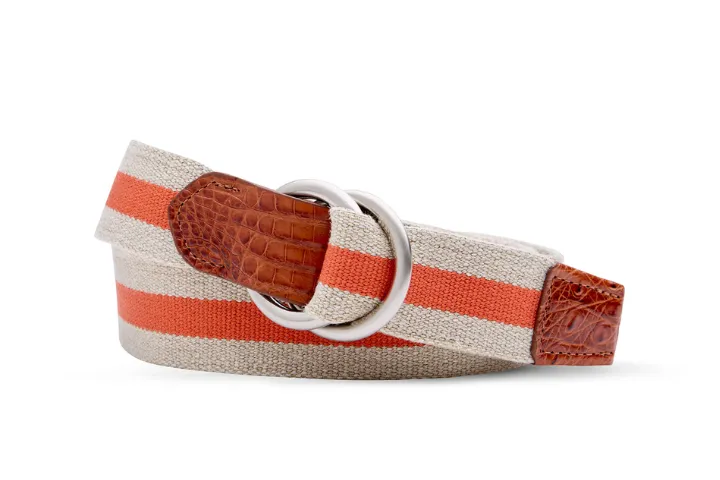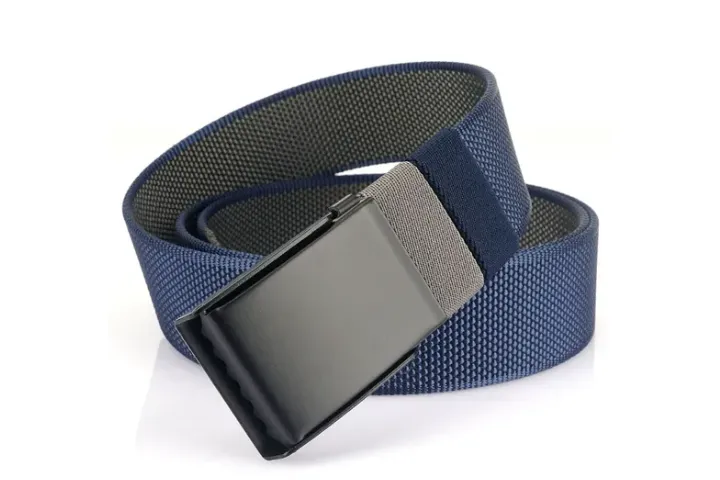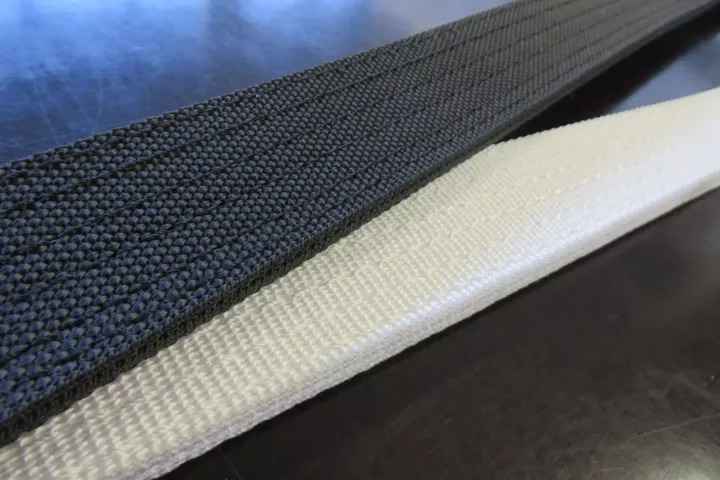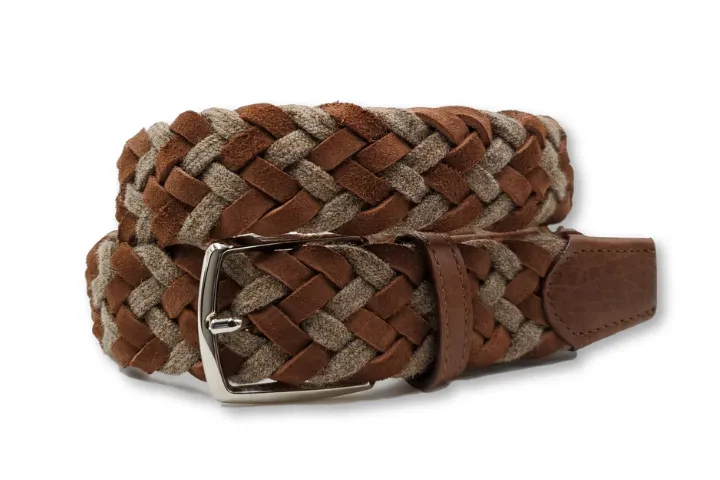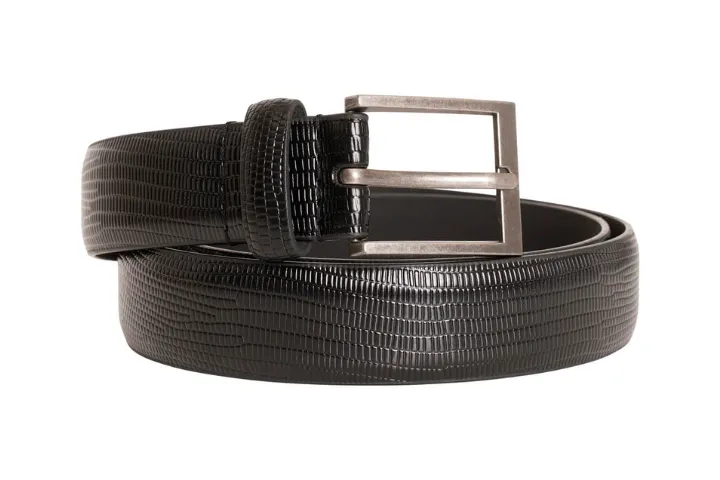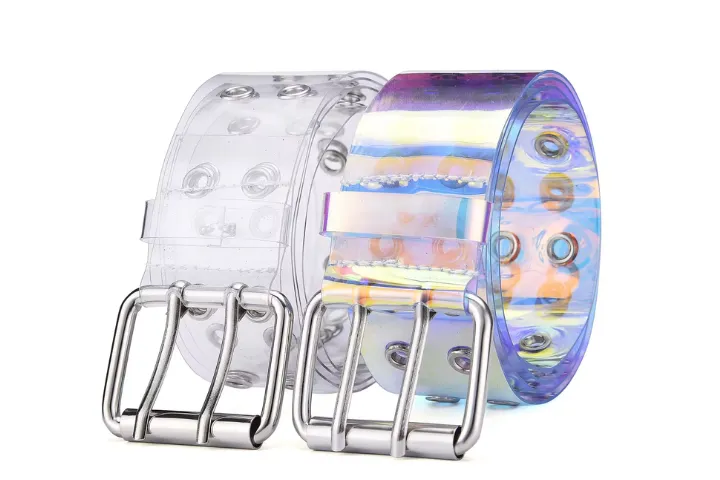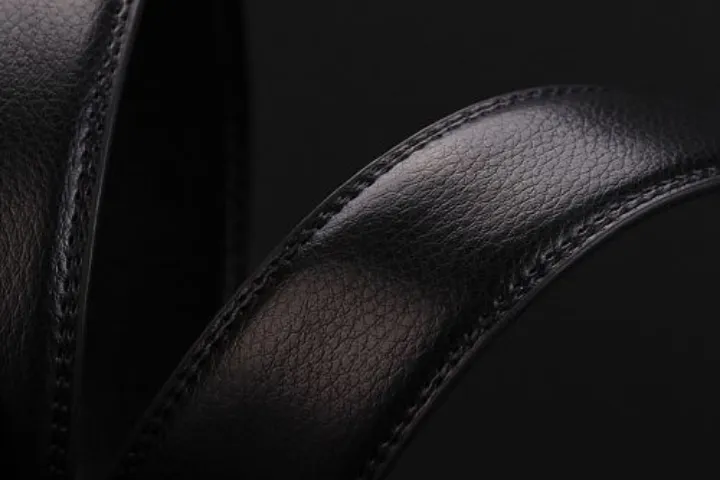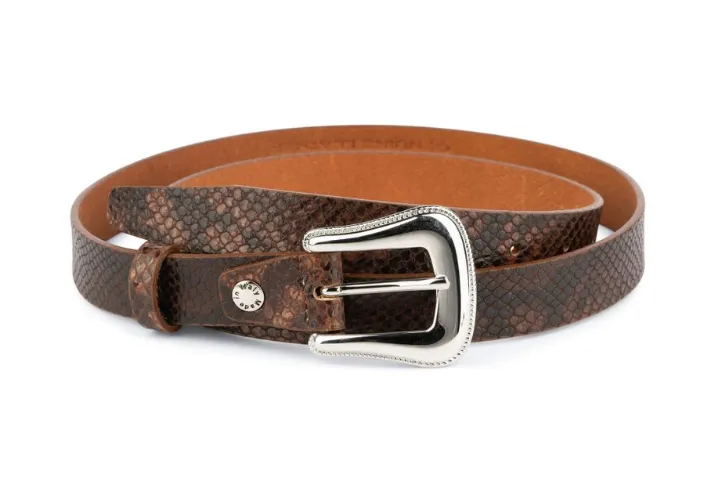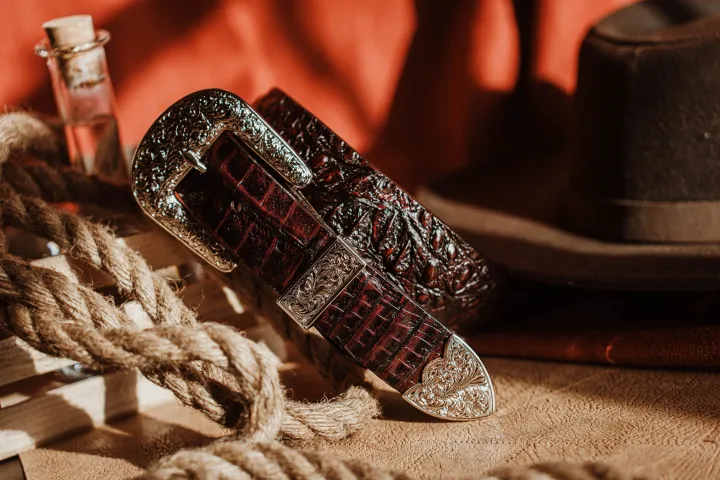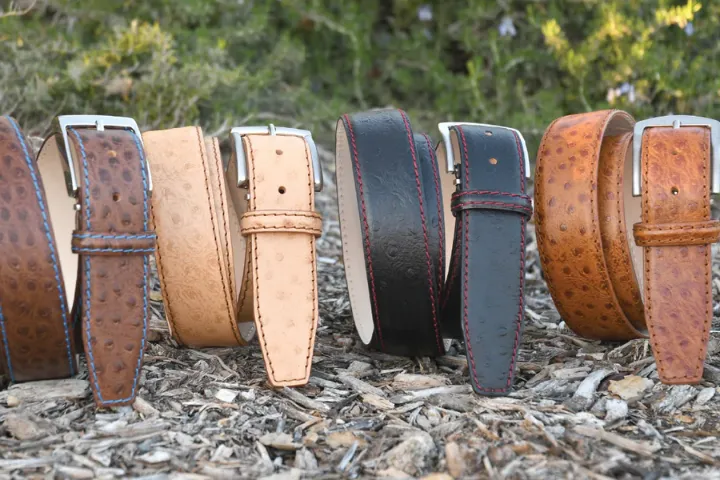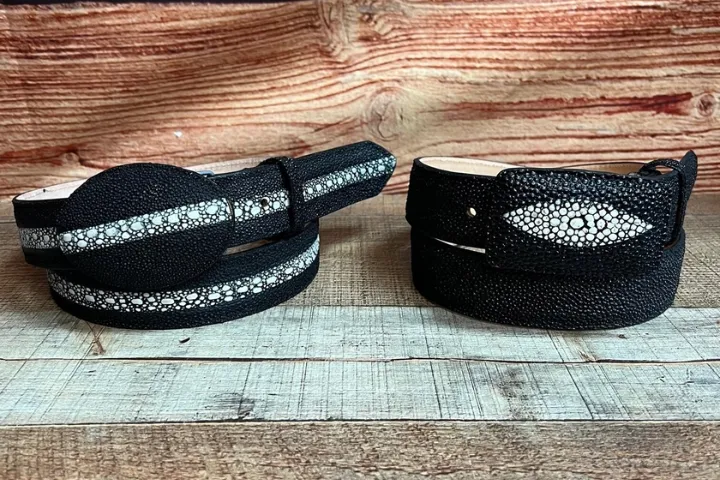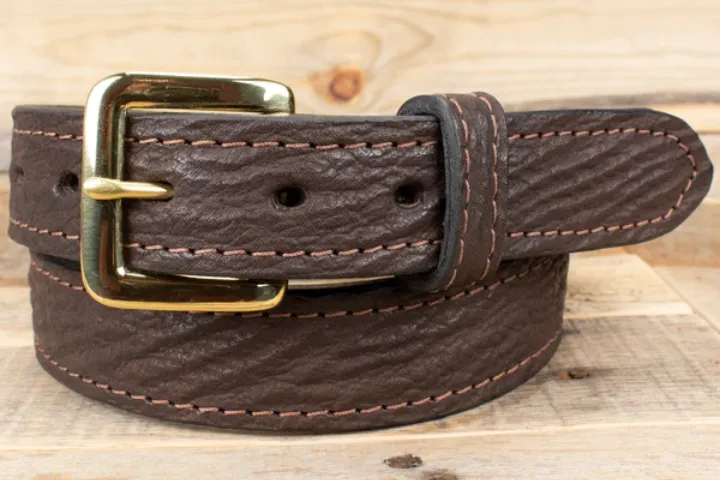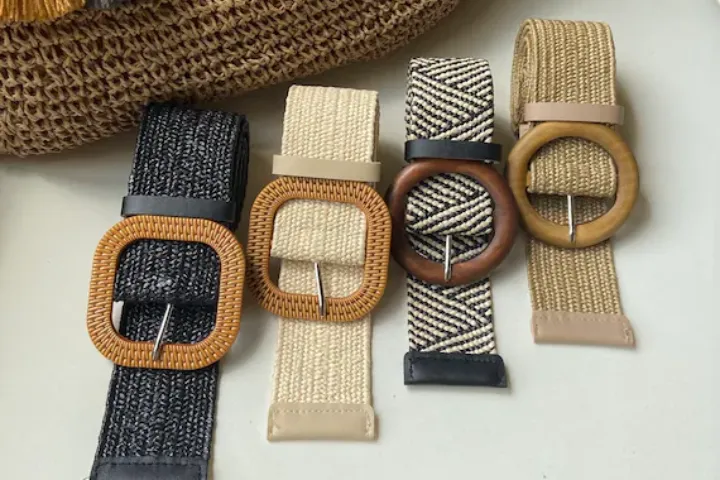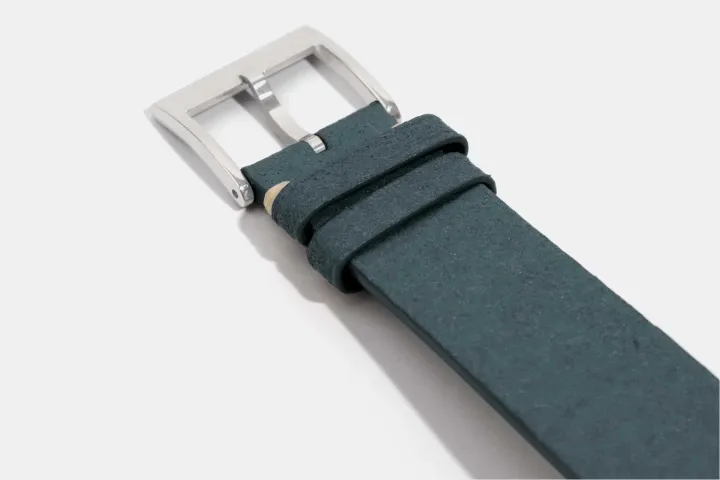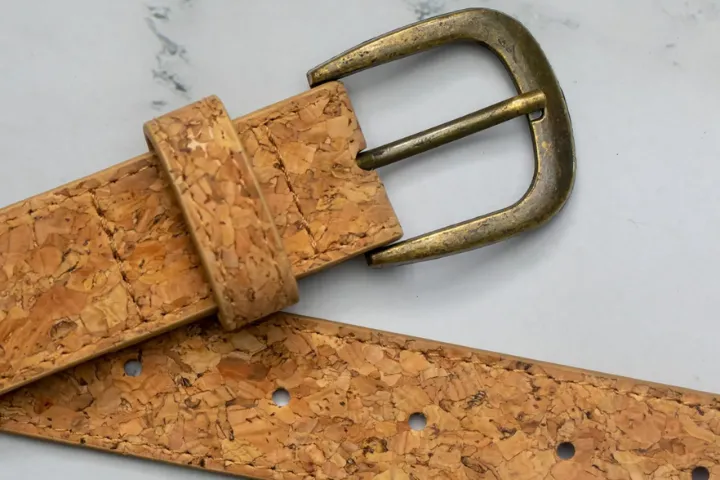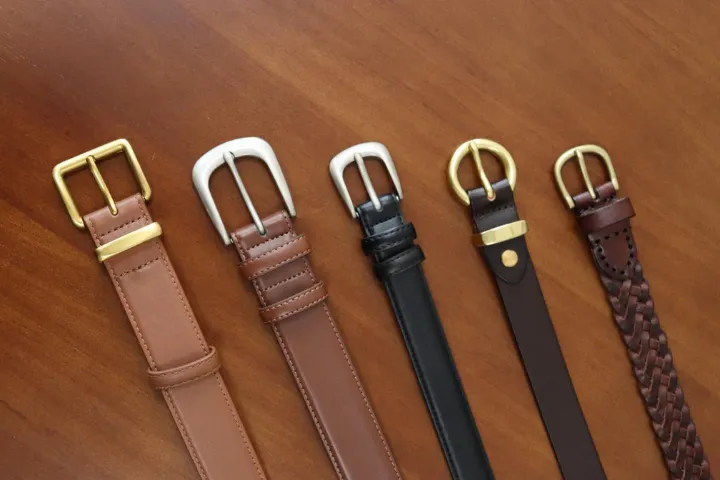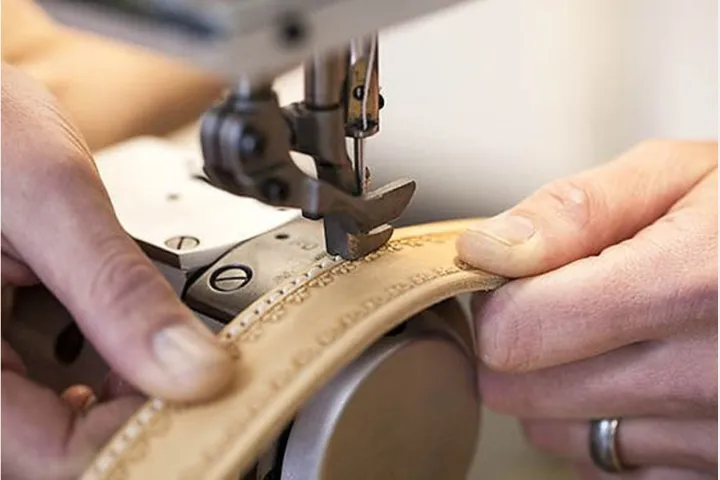Every wardrobe tells a story, and the belt you choose writes the opening chapter. From the rugged charm of full-grain leather to the laid-back vibe of straw weaves, belt materials carry the weight of functionality and fashion alike. Selecting the right fabric or hide can mean the difference between a belt that lasts a lifetime and one that frays after a season. Whether you’re a designer sourcing materials for a new collection, a retailer curating your next bestseller, or simply someone who appreciates craftsmanship, understanding the pros and cons of each option is crucial to making an informed choice.
This guide reveals which materials—natural leathers like full-grain and top-grain, textiles such as canvas and silk, synthetics like PU and PVC, exotic hides, braided straw, and eco-friendly alternatives—offer the best blend of durability, style, and value for belt making. You’ll discover how to match material to occasion, budget, and brand values, plus expert tips on care and sampling to ensure every belt you produce or buy is a perfect fit.
Imagine Marie, a small-batch accessory designer, spending weeks agonizing over leather suppliers—only to find her spring line flaming out because the wrong grain cracked in the sun. Don’t let material missteps derail your vision. Keep reading to unlock insider insights, side-by-side comparisons, and real-world advice that will help you choose the ideal belt material for any project.
Why Belt Material Matters
The choice of material defines a belt’s strength, flexibility, and aesthetic appeal. A well-selected material enhances comfort, resists wear, and complements the wearer’s style—making material selection a pivotal decision in belt design and manufacturing.
We’ll explore nine core categories—natural leathers, fabrics, synthetics, exotics, braided and straw constructions, plus sustainable options—and provide actionable guidance on selecting, testing, and caring for each to meet diverse needs and price points.
| Material Category | Types of Material |
|---|---|
| Natural Leather | Full-Grain, Top-Grain, Corrected-Grain, Split Grain, Genuine Leather, Bonded Leather |
| Fabric/Textile | Canvas, Cotton, Linen, Nylon, Polyester, Silk, Wool |
| Synthetic | PU (Vegan Leather), PVC, Rubber, Microfiber |
| Exotic Hides | Snakeskin, Crocodile Skin, Ostrich Leather, Stingray, Shark Leather |
| Braided, Rope & Straw | Cotton Braids, Hemp Braids, Synthetic Braids, Straw Weaves |
| Sustainable & Eco-Friendly | Pineapple Leather (Piñatex), Mushroom Leather, Apple Leather, Cork, Bamboo, Recycled PET, Organic Cotton |
Natural Leather Materials
Natural leather remains the gold standard for belt making, prized for its unmatched strength, timeless aesthetic, and ability to develop a unique patina over time. In this section, we’ll dive into six key leather grades—Full-Grain, Top-Grain, Genuine, Corrected-Grain, Split, and Bonded—to help you understand their distinct properties, performance trade-offs, and best applications. You’ll learn each type’s advantages and drawbacks, care requirements, and why certain hides excel in formal dress belts while others shine in rugged, casual styles. Let’s explore the world of leather and find the perfect match for your next belt project.
Full-Grain Leather
Full-grain leather is cut from the top layer of hide, preserving the natural grain and markings. It’s the strongest, most durable grade, developing a rich patina and character with age.
- Advantages:
- Exceptional strength and longevity
- Breathable—resists cracking
- Patina enhances over time
- Disadvantages:
- Highest cost per square foot
- Visible blemishes may require careful selection
Common Uses in Belts:
Premium dress belts, heirloom pieces, high-end luxury accessories.
Care Requirements:
- Clean with a soft cloth or leather brush.
- Apply neutral leather conditioner every 3–6 months.
- Avoid prolonged sun and moisture exposure.
Suitability for Belts:
Ideal for formal wear, daily office belts, and any application where longevity and patina are prized.
Top-Grain Leather
Top-grain leather is the second-highest quality, where the surface is lightly sanded to remove imperfections. It offers a uniform appearance with a slightly lower price point than full-grain.
| Aspect | Details |
|---|---|
| Advantages |
|
| Disadvantages |
|
| Common Uses | Mid-range dress belts, fashion belts, and corporate giveaways. |
| Care Requirements |
|
| Suitability for Belts | Great for business-casual and fashion-forward designs where uniform appearance matters. |
Genuine Leather
Genuine leather is made from the layers beneath top-grain, often reconstituted and dyed to mimic higher grades. It offers the “leather look” at an entry-level price.
Advantages
- Budget-friendly
- Uniform color and texture
- Immediate availability
Disadvantages
- Less durable—prone to cracking
- Lacks natural grain and patina
- Shorter lifespan
Common Uses in Belts:
Economical fashion belts, promotional items, wallets, and accessories where cost-control is key.
Care Requirements:
- Wipe with a damp cloth; avoid harsh chemicals.
- Apply a vinyl-based conditioner to prevent drying.
- Store away from heat to avoid peeling.
Suitability for Belts:
Best for short-term fashion trends or low-cost product lines; not recommended for heirloom or high-wear applications.
Corrected-Grain Leather
Corrected-grain leather starts as lower-quality hide, then is sanded, buffed, and embossed to conceal imperfections. A pigmented top coat provides a flawless surface.
- Advantages
-
- Flawless, uniform finish
- More affordable than full- or top-grain
- Resistant to stains and discoloration
- Disadvantages
-
- Artificial look; lacks natural texture
- Limited breathability; can crack over time
- Cannot develop a patina
Common Uses in Belts: Fashion-forward designs requiring consistent color—ideal for large production runs where uniformity matters.
Care Requirements:
- Clean with mild soap and water; dry thoroughly.
- Use a silicone-based conditioner to preserve the finish.
- Avoid sharp folds to prevent cracking of the pigmented layer.
Suitability for Belts:
Best for fashion belts in bold colors or branded giveaways; not suited for high-stress or heirloom-quality pieces.
Split Leather
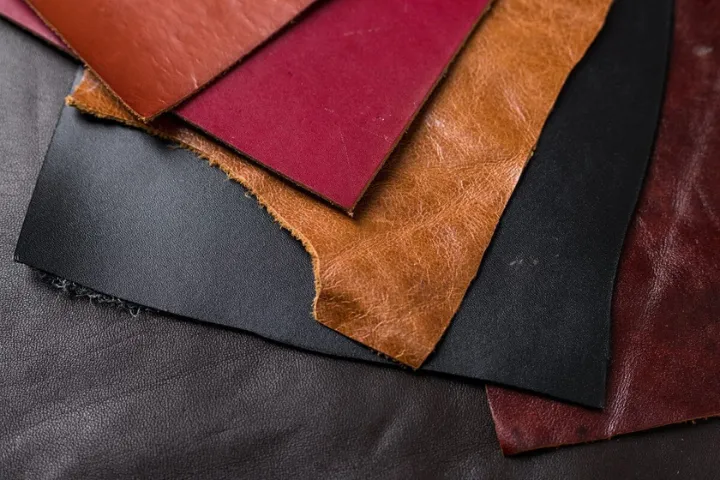
- Advantages:
- Cost-effective—makes use of lower-grade hide
- Flexible and pliable
- Good base for embossed textures
- Disadvantages:
- Less durable than top-grain
- Requires coating—can peel or crack
- No natural patina development
Common Uses in Belts:
Casual belts with embossed patterns, budget-friendly fashion lines.
Care Requirements:
- Wipe clean with a damp cloth.
- Avoid abrasive cleaners.
- Apply a thin layer of specialized leather sealant to protect the coating.
Suitability for Belts:
Ideal for mass-produced belts where cost is a priority and high wear is not expected.
Bonded Leather
Bonded leather is engineered from leftover leather scraps mixed with adhesives and coated with polyurethane. It simulates the look of leather at a fraction of the cost.
| Advantages |
|
|---|---|
| Disadvantages |
|
| Common Uses | Promotional belts, novelty accessories, very low-cost fashion items. |
| Care Requirements | Wipe with a damp cloth; avoid heat sources to slow down peeling. |
Suitability for Belts:
Best reserved for promotional or novelty belts where longevity is not critical and upfront cost must be minimal.
Comparison Table of Leather Types for Belts
| Leather Type | Durability | Cost | Patina Development | Breathability | Recommended Use |
|---|---|---|---|---|---|
| Full-Grain | ★★★★★ | High | Excellent (rich patina) | High | Premium dress & heirloom belts |
| Top-Grain | ★★★★☆ | Moderate | Good (subtle patina) | High | Business-casual & fashion belts |
| Genuine | ★★☆☆☆ | Low | Poor (none) | Low | Budget fashion & short-term use |
| Corrected-Grain | ★★★☆☆ | Low–Moderate | None | Low | Uniform-color fashion lines |
| Split Leather | ★★★☆☆ | Low | None | Moderate | Casual embossed or patterned belts |
| Bonded Leather | ★☆☆☆☆ | Very Low | None | Very Low | Promotional & novelty belts |
Fabric and Textile Options
Fabric belts offer a world of versatility—from rugged canvas straps that withstand outdoor adventures to luxurious silk bands that elevate formal attire. Unlike leather, textiles can be woven in endless colors, patterns, and textures, making them ideal for casual, sporty, or fashion-forward designs. In this section, we’ll explore seven popular fabric and textile options—canvas, cotton, linen, nylon, polyester, silk, and wool—covering their unique characteristics, care requirements, and best applications. Whether you need a breathable belt for summer or a statement piece for a special event, understanding each material’s strengths will help you make the right choice.
Canvas Belts
Canvas belts are made from tightly woven cotton or cotton-blend fabric, sometimes reinforced with a quick-drying nylon core. They’re known for their rugged texture, lightweight feel, and ability to hold printed patterns or dyed colors vividly.
Advantages
- Highly durable and abrasion-resistant
- Wide range of colors and prints
- Breathable and comfortable in warm weather
Disadvantages
- May fray at edges over time
- Less formal—limited use in dress wear
- Can stain if not sealed
Common Uses in Belts:
Casual everyday wear, outdoor and tactical styles, military-inspired designs, children’s belts, and summer vacation accessories.
Care Requirements:
- Spot-clean with mild soap and water.
- Air-dry flat to maintain shape.
- Avoid prolonged sun exposure to prevent fading.
Suitability for Belts:
Ideal for casual and functional belts where comfort, color variety, and affordability are priorities—perfect for lifestyle brands and outdoor apparel lines.
Cotton Belts
Cotton belts are crafted from soft, natural cotton fibers woven into flat or braided straps. They offer a gentle touch against the skin and can be easily printed or dyed in vibrant hues.
- Advantages:
- Lightweight and breathable
- Eco-friendly and biodegradable
- Wide range of colors and patterns
- Disadvantages:
- Less durable than canvas or leather
- Prone to stretching and shrinking when wet
- May absorb odors if not cleaned properly
Common Uses in Belts:
Casual weekend wear, children’s sizes, and fashion belts with playful prints and textures.
Care Requirements:
- Machine wash cold on gentle cycle.
- Air-dry to avoid shrinkage.
- Store in a dry place to prevent mildew.
Suitability for Belts:
Perfect for casual outfits, summer collections, and eco-conscious brands seeking a natural textile option.
Linen Belts
Linen belts are woven from flax fibers, yielding a smooth yet textured surface with natural luster. They’re lightweight, breathable, and ideal for warm climates.
| Aspect | Details |
|---|---|
| Advantages |
|
| Disadvantages |
|
| Common Uses in Belts | Resort wear, summer collections, lightweight casual belts. |
| Care Requirements |
|
| Suitability for Belts | Best for warm-weather attire and brands emphasizing natural, breathable materials. |
Nylon Belts
Nylon belts are woven from high-strength synthetic fibers, offering exceptional tensile strength and resistance to abrasion. They’re commonly used in tactical and outdoor applications.
- Advantages:
- Superior durability and tear resistance
- Lightweight and quick-drying
- Holds vibrant dye colors well
- Disadvantages:
- Can feel less natural against skin
- Limited breathability compared to natural fibers
- May degrade under prolonged UV exposure
Common Uses in Belts:
Outdoor and tactical belts, military-style webbing belts, adventure and travel designs.
Care Requirements:
- Machine wash cold or hand-wash.
- Hang to dry; avoid high-heat dryers.
- Store away from direct sunlight to maintain fiber integrity.
Suitability for Belts:
Ideal for high-performance and utility belts where strength, water resistance, and low weight are critical.
Polyester Belts
Polyester belts combine durability with elasticity, resisting shrinking and stretching. Their smooth surface is excellent for printing detailed patterns and logos.
Advantages
- High color retention and print clarity
- Resistant to wrinkles and mildew
- Moderate abrasion resistance
Disadvantages
- Lower breathability than cotton or linen
- Can melt under high temperatures
- Less eco-friendly—non-biodegradable
Common Uses in Belts:
Promotional belts with logos, fashion belts with complex prints, and sportswear accessories.
Care Requirements:
- Machine wash gentle cycle.
- Line dry; avoid ironing directly on prints.
Suitability for Belts:
Perfect for brand merchandise, graphic designs, and activewear lines where customization and color pop matter.
Silk Belts
Silk belts are crafted from smooth, natural spider-silk or mulberry silk fibers, offering a luxurious sheen and ultra-soft handfeel. They drape elegantly and are lightweight, making them ideal for formal settings.
- Advantages:
- Sumptuous texture and natural luster
- Lightweight with excellent drape
- Hypoallergenic and comfortable against skin
- Disadvantages:
- Delicate—prone to snags and abrasion
- Requires specialized care (dry cleaning preferred)
- Higher cost relative to most fabrics
Common Uses in Belts:
Evening wear accessories, bridal belts, high-end fashion statements, and lightweight runway pieces.
Care Requirements:
- Dry clean only or hand-wash in cold water with gentle detergent.
- Avoid twisting or wringing—gently squeeze out water.
- Lay flat to dry, away from direct sunlight.
Suitability for Belts:
Best reserved for special occasions and luxury designs where appearance outweighs rugged performance.
Wool Belts
Wool belts are woven from natural sheep’s wool, sometimes blended with synthetic fibers for strength. They offer warmth, texture, and moisture-wicking properties.
| Aspect | Details |
|---|---|
| Advantages |
|
| Disadvantages |
|
| Common Uses in Belts | Winter collections, textured casual belts, artisan and knitwear-inspired designs. |
| Care Requirements |
|
| Suitability for Belts | Excellent for autumn/winter lines and brands focusing on natural fiber textures. |
Comparison Table of Fabric & Textile Options for Belts
| Material | Durability | Formality | Breathability | Care Complexity | Typical Uses |
|---|---|---|---|---|---|
| Canvas | ★★★★☆ | Casual | High | Low | Outdoor, tactical, everyday casual |
| Cotton | ★★★☆☆ | Casual | High | Medium | Summer wear, children’s belts |
| Linen | ★★★☆☆ | Resort / Casual | Very High | High | Resort wear, lightweight summer belts |
| Nylon | ★★★★★ | Casual / Utility | Medium | Low | Tactical, military, adventure belts |
| Polyester | ★★★★☆ | Casual / Promotional | Low–Medium | Low | Printed fashion, sportswear |
| Silk | ★★☆☆☆ | Formal | Medium | High | Evening wear, bridal belts |
| Wool | ★★★☆☆ | Casual / Seasonal | High | High | Winter collections, textured casual belts |
Synthetic Materials
Man-made materials offer budget-friendly, water-resistant alternatives to leather and fabric. In this section, we’ll cover PU (vegan leather), PVC, rubber, and microfiber, plus a quick comparison between synthetic performance and genuine leather to help you decide when cost and maintenance trump tradition.
PU (“Vegan Leather”)
Polyurethane (PU) is a leather-like coating bonded to a fabric backing—usually polyester—creating a flexible, smooth surface that mimics genuine leather without animal hides.
- Advantages:
- Affordable and widely available
- Waterproof and stain-resistant
- Consistent texture and color
- Disadvantages:
- Less breathable; may trap heat
- Surface can crack over time
- Non-biodegradable; lower eco score
Common Uses in Belts:
Fashion-forward vegan collections, promotional giveaways, and entry-level accessory lines.
Care Requirements:
Wipe clean with a damp cloth; avoid harsh solvents. Store in cool, shaded areas to minimize cracking.
Suitability for Belts:
Excellent for brands seeking animal-free materials at low cost; best for light-to-moderate wear scenarios.
PVC Belts
PVC (polyvinyl chloride) belts are constructed from flexible plasticized vinyl sheets, often embossed or printed to resemble leather grain. They offer waterproof performance and a smooth, uniform finish.
- Advantages:
- Highly water-resistant and easy to clean
- Very affordable production cost
- Consistent texture and color—ideal for mass production
- Disadvantages:
- Prone to cracking or brittleness over time
- Lacks breathability—can feel sticky against skin
- Non-biodegradable and less eco-friendly
Common Uses in Belts:
Budget fashion lines, novelty belts, waterproof outdoor styles, and promotional giveaways where low cost and easy cleaning are priorities.
Care Requirements:
Wipe with a damp cloth and mild soap; avoid abrasive cleaners and prolonged sun exposure to prevent fading or warping.
Suitability for Belts:
Best for entry-level fashion belts, children’s belts, or any application where price and water resistance are more important than longevity or luxury feel.
Rubber Belts
Rubber belts are molded or extruded from natural or synthetic rubber compounds, offering exceptional flexibility and water resistance. Often featuring molded textures or studded details, they’re built for performance and comfort.
- Advantages:
- Outstanding flexibility and stretch recovery
- Excellent grip and slip resistance
- Waterproof and easy to clean
- Disadvantages:
- Prone to tearing under extreme stress
- Can degrade in prolonged UV exposure
- Limited breathability—may trap heat
Common Uses in Belts:
Work belts, utility and tool belts, swimwear and diving straps, and fitness accessories where stretch and water resistance are essential.
Care Requirements:
Rinse with fresh water after exposure to salt or chlorine; wipe dry and store flat away from direct sunlight to prevent cracking.
Suitability for Belts:
Ideal for heavy-duty and sports applications where durability and water resistance outweigh aesthetics.
Microfiber Belts
Microfiber belts use ultra-fine synthetic fibers woven to resemble leather’s texture. They combine light weight with surprising strength and a soft handfeel.
- Advantages:
- Lightweight yet durable
- Water-resistant and quick-drying
- Soft, suede-like finish without animal products
- Disadvantages:
- May pill or fuzz over time
- Less heat-resistant than leather
- Can be more expensive than PU
Common Uses in Belts: Mid-tier vegan lines, activewear belts, and soft-touch fashion accessories.
Care Requirements: Spot-clean with mild detergent; air-dry away from heat sources.
Suitability for Belts: Perfect for brands wanting a soft, leather-like feel with vegan credentials and moderate durability.
Performance Comparison: Synthetics vs. Genuine Leather
| Material | Durability | Water Resistance | Breathability | Eco Impact |
|---|---|---|---|---|
| PU | ★★★☆☆ | ★★★★☆ | ★☆☆☆☆ | Low |
| PVC | ★★☆☆☆ | ★★★★★ | ★☆☆☆☆ | Low |
| Rubber | ★★★☆☆ | ★★★★★ | ★☆☆☆☆ | Medium |
| Microfiber | ★★★★☆ | ★★★☆☆ | ★★☆☆☆ | Medium |
| Genuine Leather | ★★★★☆ | ★★☆☆☆ | ★★★★☆ | High |
Exotic and Specialty Materials
When it comes to luxury and statement-making belts, exotic hides stand in a class of their own. Materials like snakeskin, crocodile, ostrich, stingray, and shark leather offer unrivaled texture, depth, and exclusivity. These specialty leathers are prized by high-end designers and discerning customers for their unique grain patterns and tactile appeal. Throughout this section, we’ll examine each exotic material’s characteristics, ethical considerations, maintenance needs, and ideal use cases—empowering you to decide when investing in a luxury belt is worth the splurge.
Snakeskin Belts
Snakeskin belts are crafted from the shed skins of various snake species—most commonly python, rattlesnake, or anaconda. The natural scales create intricate, diamond-shaped or hexagonal patterns that catch the light, offering a distinctive, luxurious look.
- Advantages:
- Unique scale pattern—no two belts are identical
- Soft, pliable texture that conforms to the body
- High perceived luxury and exclusivity
- Disadvantages:
- Very high cost due to limited supply and craftsmanship
- Requires careful handling—scales can lift if not maintained
- Ethical and legal considerations under CITES regulations
Common Uses in Belts:
Statement fashion pieces, limited-edition luxury collections, designer collaborations, and high-end bespoke belts.
Care Requirements:
- Wipe gently with a soft, dry cloth to remove dust.
- Condition with a specialized reptile leather balm every 6–12 months.
- Store flat or rolled (scale-side out) in a cool, dry place away from direct sunlight.
- Avoid water and harsh chemicals to prevent scale separation.
Suitability for Belts:
Ideal for clients seeking ultra-luxe, fashion-forward accessories or bespoke pieces that emphasize exclusivity and artisanal craftsmanship.
Crocodile Leather Belts
Crocodile leather is sourced from the belly or back of crocodile hides, offering large, rectangular scale patterns that are both bold and refined. The natural grain varies from small, pebbled sections to larger, mosaic-like scales, providing a visually striking surface.
- Advantages:
- Ultra-durable with firm structure
- Distinctive, high-contrast scale patterns
- Exceptional longevity—ages gracefully
- Disadvantages:
- Premium price point due to rarity and processing
- Requires expert craftsmanship to avoid scale distortion
- Strict CITES and import/export regulations
Common Uses in Belts:
Luxury dress belts, investment pieces, and high-end designer lines where a bold statement and superior durability are essential.
Care Requirements:
- Dust with a soft brush, moving along the scale direction.
- Apply a reptile-specific conditioner to maintain suppleness every 4–6 months.
- Keep away from excessive moisture and heat to prevent cracking.
- Store in a breathable pouch, scale-side up, to preserve texture.
Suitability for Belts:
Perfect for clients seeking an heirloom-quality belt that combines artistry with performance, suitable for both formal and executive-casual attire.
Ostrich Leather Belts
Ostrich leather is renowned for its distinctive quill pattern—raised follicles where feathers once grew—creating a unique, dotted texture. This supple hide combines lightweight flexibility with remarkable strength.
- Advantages:
- Superior softness and flexibility
- Distinctive quill pattern adds visual interest
- High tensile strength and resilience
- Disadvantages:
- Premium cost reflecting rarity and processing
- Sensitive to scratches—follicle bumps can catch
- Special storage to avoid flattening quills
Common Uses in Belts:
High-end fashion accessories, luxury casual belts, and bespoke designs that showcase texture and craftsmanship.
Care Requirements:
- Gently dust with a soft, dry cloth along quill direction.
- Condition with a gentle leather conditioner every 6–8 months.
- Store flat or rolled to maintain quill structure, away from heat and humidity.
- Avoid sharp objects that may damage follicles.
Suitability for Belts:
Ideal for fashion-conscious clients seeking a distinctive, tactile accessory that balances luxury with everyday wearability.
Stingray Belts
Stingray leather features a pebbled, granular surface with a natural “eyeshine” caused by calcium deposits. Its unique texture and glossy appearance make it a standout choice for statement belts.
- Advantages:
- Exceptionally durable and resistant to abrasion
- Water-resistant and easy to clean
- Distinctive, high-contrast texture
- Disadvantages:
- Stiffer feel—requires break-in
- Premium cost due to specialized tanning processes
- Limited color options without dye treatments
Common Uses in Belts:
Designer statement belts, luxury casual accessories, and artisan collections seeking a unique focal point.
Care Requirements:
- Wipe gently with a damp cloth to remove debris.
- Apply a neutral, pH-balanced conditioner sparingly every 6–12 months.
- Store flat or rolled, avoiding extreme temperatures to maintain rigidity.
Suitability for Belts:
Perfect for high-end fashion lines and bespoke pieces where durability and one-of-a-kind texture are key selling points.
Shark Leather Belts
Shark leather (shagreen) boasts a fine, pebbled grain with naturally embedded calcified nodules, offering a matte texture that’s surprisingly soft and flexible.
- Advantages:
- High tensile strength and tear resistance
- Unique tactile surface with subtle grain
- Offers a matte, understated look
- Disadvantages:
- Limited availability and higher cost
- Requires expert tanning to avoid stiffness
- Susceptible to drying if not conditioned
Common Uses in Belts:
Luxury minimalist belts, executive-casual designs, and premium gift items for discerning clients.
Care Requirements:
- Clean with a soft, dry cloth; avoid water exposure.
- Condition sparingly with a specialist leather balm every 6–9 months.
- Store in a cool, dry place, laid flat to prevent distortion.
Suitability for Belts:
Ideal for brands offering refined, durable accessories with a subtle, textured aesthetic.
Comparison Table of Exotic & Specialty Materials for Belts
| Material | Durability | Cost | Maintenance | Uniqueness | Recommended Use |
|---|---|---|---|---|---|
| Snakeskin | ★★★★☆ | High | Medium (specialized conditioners) | ★★★★★ (distinct scale patterns) | Designer & bespoke belts |
| Crocodile Leather | ★★★★★ | Very High | High (reptile-specific care) | ★★★★☆ (bold scale mosaic) | Premium dress & investment pieces |
| Ostrich Leather | ★★★★☆ | Very High | Medium (gentle conditioning) | ★★★★★ (quill pattern) | Luxury casual & fashion belts |
| Stingray | ★★★★★ | High | Medium (neutral balm) | ★★★★☆ (pebbled eyeshine) | Statement accessories |
| Shark Leather | ★★★★★ | High | Medium (specialist balm) | ★★★☆☆ (subtle grain) | Executive-casual & minimalist belts |
Braided, Rope & Straw Constructions
Braided, rope, and straw belts combine craftsmanship with casual elegance, offering lightweight flexibility and unique textures that leather and fabric alone can’t replicate. Whether woven from natural fibers like cotton and hemp, engineered synthetics, or traditional straw weaving techniques, these constructions add a laid-back, artisanal touch to any outfit. In this section, we’ll explore the differences between cotton and hemp braids, modern synthetic braid options, and time-honored straw belt techniques. You’ll also find practical styling advice and durability tips to ensure your braided or straw belt looks great season after season.
Cotton & Hemp Braids
Braided belts crafted from cotton or hemp fibers feature interwoven strands forming a flat, flexible strap. Cotton provides softness and color versatility, while hemp adds natural texture and strength.
- Advantages:
- High breathability and comfort
- Eco-friendly and biodegradable
- Elastic give for adjustable fit
- Disadvantages:
- Can stretch over time, losing shape
- Susceptible to staining and fading
- Less abrasion-resistant than synthetic braids
Common Uses in Belts:
Casual wear, beachwear, summer collections, and artisan market pieces where natural fibers shine.
Care Requirements:
Spot-clean with mild detergent, rinse thoroughly, and air-dry flat to maintain braid integrity.
Suitability for Belts:
Ideal for eco-conscious brands and clients seeking a lightweight, breathable belt with a handcrafted aesthetic.
Synthetic Braids
Synthetic braided belts are crafted from materials like polyester, nylon, or recycled plastics. These fibers are woven into dynamic patterns that mimic natural braids but with enhanced strength and color retention.
- Advantages:
- Superior durability and resistance to abrasion
- Vibrant, long-lasting colors
- Quick-drying and water-resistant
- Disadvantages:
- Less breathable than natural fibers
- May feel less soft against skin
- Potential environmental concerns if not recycled
Common Uses in Belts:
Sport and outdoor belts, utility styles, promotional items, and budget-friendly fashion accessories.
Care Requirements:
Machine or hand wash with mild detergent; air-dry away from heat to preserve braid structure.
Suitability for Belts:
Perfect for activewear brands, outdoor gear, and any application where robustness and easy maintenance are essential.
Straw Belt
Straw belts are woven from natural plant fibers—such as raffia, seagrass, or wheat straw—to create lightweight, textured straps. The fibers can be plaited, twined, or coiled into flat or rounded shapes, offering an artisanal feel perfect for warm-weather styling.
- Plaited Weave: Interlaces three or more straw strands in an over-under pattern, creating a flat, ribbon-like belt.
- Twined Technique: Wraps fiber pairs around a central cord, forming a round, rope-like belt with pronounced texture.
- Coiling Method: Spirals straw in concentric circles, stitching each coil to the previous one for a sturdy, basket-like belt.
Advantages:
- Ultra-lightweight for hot climates
- Unique, natural texture with visual depth
- Eco-friendly and biodegradable
Disadvantages:
- Limited tensile strength—edges may fray
- Sensitive to moisture and humidity
- Requires gentle handling to preserve weave
Common Uses in Belts:
Resort wear, festival accessories, casual summer outfits, and artisan market collections.
Care Requirements:
Brush off loose debris gently; spot-clean with a damp cloth; let air-dry completely; store flat to prevent distortion.
Styling & Durability Tips
Styling Tips:
- Pair straw belts with sundresses, linen trousers, or denim shorts for an inviting, laid-back look.
- Use a thin leather or fabric backing for structure while maintaining the straw’s natural appeal.
- Incorporate contrasting buckles (metal or wood) to elevate the artisanal texture.
Durability Tips:
- Reinforce stress points (near buckle holes) with discreet stitching or leather patches.
- Rotate wear—avoid daily use to extend lifespan.
- Keep away from water; humidity can weaken fibers—consider a protective spray designed for natural fibers.
Comparison Table of Braided, Rope & Straw Belt Constructions
| Material | Durability | Eco-Friendliness | Flexibility | Care Complexity | Typical Uses |
|---|---|---|---|---|---|
| Cotton Braids | ★★★☆☆ | High (biodegradable) | High (elastic give) | Low (spot-clean) | Casual, summer, artisan belts |
| Hemp Braids | ★★★★☆ | High (sustainable fiber) | Medium (stiffer than cotton) | Low (spot-clean) | Eco-fashion, festival wear |
| Synthetic Braids | ★★★★★ | Medium (depends on source) | Medium (less stretch) | Low (wash & air-dry) | Outdoor, sport, promotional belts |
| Straw Weaves | ★★☆☆☆ | High (natural fibers) | Low (rigid weave) | Medium (gentle spot-clean) | Resort, summer, festival accessories |
Sustainable and Eco-Friendly Materials
Growing consumer demand for ethical and environmentally responsible products has brought sustainable materials to the forefront of belt design. From fruit-based leathers to recycled plastics and rapidly renewable resources like cork and bamboo, eco-friendly options now rival traditional hides in both performance and style. In this section, we’ll introduce seven innovative sustainable materials—Piñatex, mushroom leather, apple leather, cork, bamboo, recycled PET, and organic cotton—highlighting their unique properties, environmental benefits, care requirements, and best uses. Discover how these alternatives not only reduce ecological impact but also open new creative possibilities for modern belt collections.
Piñatex (Pineapple Leather)
Piñatex is a natural leather alternative made from the cellulose fibers of pineapple leaf waste. It has a textured surface reminiscent of traditional leather but with slight grain irregularities, giving each piece a unique look.
- Advantages:
- Utilizes agricultural waste, reducing landfill contributions
- Breathable and lightweight
- Cruelty-free and vegan-friendly
- Disadvantages:
- Less tensile strength compared to full-grain leather
- Limited colorfastness—may fade with prolonged sun exposure
- Newer material with evolving quality standards
Common Uses in Belts:
Vegan fashion lines, eco-conscious accessory collections, and limited-edition capsule releases that highlight sustainability.
Care Requirements:
Wipe clean with a damp cloth; avoid soaking. Apply a protective spray designed for plant-based leathers to extend lifespan.
Suitability for Belts:
Ideal for brands promoting eco-credentials and vegan materials, offering a stylish alternative without animal products.
Mushroom Leather
Mushroom leather, or “Mylo,” is crafted from mycelium—the root structure of mushrooms—grown in controlled environments. It has a soft, suede-like feel with a smooth backing, closely mimicking animal leather’s hand and drape.
- Advantages:
- Rapidly renewable source (mycelium grows in days)
- Biodegradable and low environmental impact
- Customizable texture and thickness
- Disadvantages:
- Emerging technology—limited large-scale availability
- Sensitivity to heat and moisture if untreated
- Higher price relative to other vegan leathers
Common Uses in Belts:
High-end vegan accessories, sustainable fashion collaborations, and concept collections emphasizing innovation.
Care Requirements:
Spot-clean with mild soap; avoid excess water. Condition occasionally with a plant-based leather conditioner to maintain suppleness.
Suitability for Belts:
Perfect for eco-conscious brands wanting a cutting-edge material that rivals luxury hides without animal use.
Apple Leather
Apple leather is produced from apple core and peel waste combined with a polyurethane binder. It features a smooth, uniform surface and can be finished to mimic grain or suede textures.
- Advantages:
- Upcycles food industry byproducts
- Soft, supple feel with good flexibility
- Vegan-friendly and sustainable
- Disadvantages:
- Relies on PU binder—less biodegradable
- Varied quality depending on manufacturer
- Moderate durability—better for light-to-medium wear
Common Uses in Belts:
Fashion belts for lifestyle brands, vegan accessory lines, and products highlighting circular economy principles.
Care Requirements:
Wipe with a damp cloth; avoid prolonged sun exposure. Store away from heat to prevent binder degradation.
Suitability for Belts:
Great for casual and fashion-focused belts where sustainability and storytelling are key selling points.
Cork Belts
Cork fabric is harvested from the bark of cork oak trees without harming the tree. It’s lightweight, water-resistant, and has a distinctive textured pattern.
- Advantages:
- Renewable harvest—bark regrows every 9–12 years
- Water-resistant and hypoallergenic
- Unique natural texture and pattern
- Disadvantages:
- Less tensile strength—can fray at edges
- Limited color options without dyeing
- Requires joining to a fabric backing for support
Common Uses in Belts:
Eco-fashion lines, resort wear accessories, and products marketed for sustainable forestry practices.
Care Requirements:
Clean with a damp cloth; avoid abrasive scrubbing. Condition occasionally with a cork sealant to preserve surface integrity.
Suitability for Belts:
Ideal for brands promoting natural materials and sustainable harvesting, suitable for casual and resort styles.
Bamboo Belts
Description & Characteristics:
Bamboo belts are woven from finely processed bamboo fibers, offering a silky sheen and natural antimicrobial properties. The fabric is both strong and flexible.
- Advantages:
- Rapidly renewable and biodegradable
- Natural antimicrobial and moisture-wicking
- Soft handfeel with a subtle sheen
- Disadvantages:
- May lose strength if over-washed
- Limited structural rigidity—best for thinner belts
- Can be more expensive than conventional textiles
Common Uses in Belts:
Lightweight fashion belts, wellness-focused brands, and eco-luxury accessory lines.
Care Requirements:
Hand-wash in cold water; air-dry flat. Avoid bleach and high-heat drying to prevent fiber damage.
Suitability for Belts:
Perfect for sustainable fashion collections where comfort and eco credentials are priorities.
Recycled PET Belts
Description & Characteristics:
Recycled PET belts are woven from fibers derived from post-consumer plastic bottles. The material offers a smooth finish, high tensile strength, and excellent color retention.
- Advantages:
- Diverts plastic waste from landfills
- Excellent durability and abrasion resistance
- Quick-drying and UV-resistant
- Disadvantages:
- Non-biodegradable—long-term environmental impact
- Less natural aesthetic—plastic-like sheen
- Potential microplastic shedding over time
Common Uses in Belts:
Sports and outdoor belts, eco-conscious activewear, and corporate giveaways emphasizing sustainability.
Care Requirements:
Machine wash gentle; air-dry. Avoid fabric softeners to maintain fiber strength and appearance.
Suitability for Belts:
Ideal for brands prioritizing recycled content and durability in high-activity applications.
Organic Cotton Belts
Description & Characteristics:
Organic cotton belts are made from cotton grown without synthetic pesticides or fertilizers. The fabric is soft, breathable, and hypoallergenic, offering a natural look and feel.
- Advantages:
- Environmentally friendly cultivation
- Soft, skin-friendly texture
- Biodegradable and compostable
- Disadvantages:
- Prone to staining and shrinkage
- Lower abrasion resistance than synthetics
- Requires more land and water than other fibers
Common Uses in Belts:
Casual and children’s belts, eco-fashion lines, and products targeting health-conscious consumers.
Care Requirements:
Machine wash cold; air-dry to prevent shrinkage and maintain fiber integrity.
Suitability for Belts:
Best for brands emphasizing organic credentials and a natural aesthetic, ideal for low-impact everyday wear.
Comparison Table of Sustainable & Eco-Friendly Belt Materials
| Material | Durability | Eco-Friendliness | Cost | Care Complexity | Typical Uses |
|---|---|---|---|---|---|
| Piñatex (Pineapple Leather) | ★★★☆☆ | ★★★★☆ (upcycled waste) | Moderate | Low (wipe-clean) | Vegan fashion, capsule collections |
| Mushroom Leather | ★★★☆☆ | ★★★★★ (rapidly renewable) | High | Medium (spot-clean & condition) | Sustainable luxury, concept pieces |
| Apple Leather | ★★★☆☆ | ★★★★☆ (upcycled byproduct) | Moderate | Low (wipe-clean) | Casual vegan belts, eco-friendly lines |
| Cork | ★★☆☆☆ | ★★★★★ (harvested sustainably) | Moderate | Low (wipe-clean) | Resort wear, eco-accessories |
| Bamboo | ★★★☆☆ | ★★★★☆ (rapid growth) | Moderate | Medium (hand-wash) | Wellness & eco-luxury belts |
| Recycled PET | ★★★★☆ | ★★★☆☆ (recycles plastic) | Low | Low (machine-wash) | Sports & outdoor belts |
| Organic Cotton | ★★★☆☆ | ★★★★☆ (chemical-free) | Low–Moderate | Medium (machine-wash) | Casual & children’s belts |
How to Choose the Right Belt Material
Choosing the perfect belt material involves balancing practical needs, brand image, and cost. Below are five key considerations—occasion, budget, positioning, prototyping, and a final checklist—to guide you through a confident decision-making process.
Matching Material to Occasion
Not all belts suit every setting. Consider:
- Formal Events: Full-grain or crocodile leather for sleek, refined appeal.
- Business Casual: Top-grain leather or microfiber blends for polished yet comfortable wear.
- Outdoor & Sport: Nylon, rubber, or synthetic braids for durability and moisture resistance.
- Summer & Resort: Canvas, linen, or straw weaves for breathability and laid-back style.
- Sustainable Fashion: Piñatex, cork, or recycled PET for eco-friendly credentials.
Budget Considerations
Your price point shapes material choice:
- High-End ($100+ per belt): Exotic hides, full-grain leather, mushroom leather.
- Mid-Range ($30–$100): Top-grain leather, genuine leather, PU vegan leather.
- Entry-Level (<$30): Bonded leather, PVC, recycled PET, basic canvas.
Tip: Factor in long-term value—premium materials often outlast budget options, reducing replacement costs.
Brand Positioning
Your material should reinforce brand identity:
| Brand Tier | Suggested Materials | Key Message |
|---|---|---|
| Luxury | Crocodile, ostrich, full-grain leather | Exclusivity & craftsmanship |
| Contemporary | Top-grain leather, microfiber, Piñatex | Modern style & innovation |
| Eco-Friendly | Cork, apple leather, recycled PET | Sustainability & conscience |
| Casual/Youth | Canvas, nylon, straw | Playful & accessible |
Prototyping & Sampling with Hoplok
Before committing to bulk, follow these steps:
- Request Swatches: Select 3–5 material samples to evaluate texture and color under real-world light.
- Rapid Sample Turnaround: Hoplok’s 2–7 day prototyping ensures quick feedback on belt designs.
- Functional Testing: Wear-test prototypes for comfort, buckle alignment, and edge durability.
- Refine & Approve: Incorporate feedback on thickness, flexibility, and finish before production.
Final Decision Checklist
| Criteria | ✔️ Met? |
|---|---|
| Material matches intended occasion | |
| Cost aligns with budget expectations | |
| Reinforces brand positioning | |
| Sample tests meet durability standards | |
| Care requirements acceptable to end user |
Conclusion
Key Takeaways
- Material Matters: The right belt material—whether premium leather, sturdy textile, innovative vegan hide, or eco-friendly alternative—directly impacts durability, aesthetics, and user satisfaction.
- Balance Priorities: Match material to occasion, budget, and brand identity for a cohesive product line. Luxury hides command top prices but excel in longevity; synthetics and fabrics offer versatility at lower costs.
- Innovate Sustainably: Recent advances in Piñatex, mushroom, and recycled PET materials demonstrate that eco-friendly belts can compete on performance and style while reducing environmental impact.
- Prototype Wisely: Swatches, rapid sampling, and real-world testing with Hoplok ensure you refine textures, thickness, and finishes before full production—avoiding costly missteps.
Next Steps & Hoplok Leather Samples
Ready to bring your belt collection to life? Hoplok Leather offers:
- Free Sample Swatches: Receive small material pieces across leather, fabric, and sustainable lines to evaluate touch and color.
- Rapid Prototyping (2–7 days): Get functional belt samples with your chosen materials and hardware for hands-on testing.
- Custom Consultation: Our experts guide you on material selection, care requirements, and cost optimization.
Contact info@hoplokleather.com today to request your personalized samples and start crafting belts that marry quality, style, and sustainability.
Frequently Asked Questions (FAQ)
What Is the Most Durable Belt Material?
Full-grain leather and exotic hides like crocodile or stingray rank highest in durability, resisting wear, moisture, and UV exposure. For synthetic options, high-tenacity nylon and rubber belts offer excellent performance in demanding conditions.
How Do I Care for Leather vs. Fabric Belts?
Leather belts require periodic conditioning with a neutral leather balm, gentle cleaning, and avoidance of water. Fabric belts can be spot-cleaned or machine-washed on a gentle cycle, then air-dried—avoid high heat to prevent shrinkage and fading.
Are Vegan Leather Belts as Long-Lasting as Real Leather?
Modern vegan leathers like PU and Piñatex can last years under light to moderate wear but may crack or fade faster than full-grain leather. Proper maintenance and choosing high-quality formulations help extend their lifespan.
Which Materials Work Best for Formal vs. Casual Belts?
Formal belts shine in full-grain, top-grain, or crocodile leather paired with polished hardware. Casual styles favor canvas, braided cotton, hemp, or straw constructions, offering breathability and relaxed aesthetics for everyday wear.
How Can I Test a New Material Before Bulk Ordering?
Request sample swatches and rapid prototypes. Perform wear-testing: buckle flex, edge abrasion, and colorfastness. Evaluate in real-world conditions—humidity, light exposure, and daily movement—to confirm performance before committing to large production runs.




